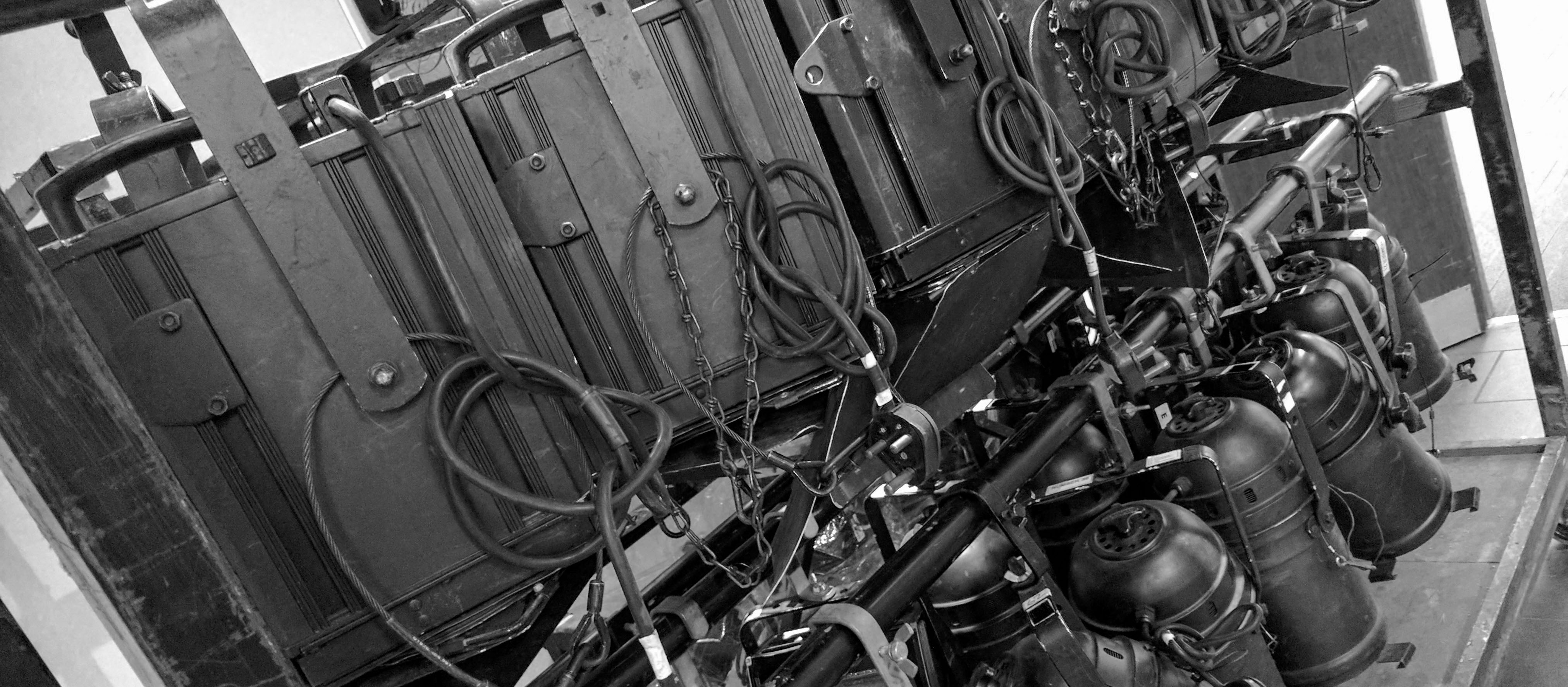Kit
By Giles Moss on March 25th
We hire a LOT of production kit. Nineteen theatres need seemingly endless lights, sound rigs, trusses, drapes, about a zillion miles of cabling and all sorts of other accessories like ladders and gaffer tape. I used to count the trucks, the cables... but had to give up because the numbers just got too big.
The kit we choose surprises some people. Given the fast turnaround of our theatres, it may seem an ideal environment for intelligent lighting fixtures - after all, no gelling or ladders needed to focus them. In fact, we go in the opposite direction: we favour absolute simplicity. Adopting such a “simple is best” approach removes a training overhead for our staff and a lot of complexity from the rig. Most importantly though, there’s just less to go wrong. Everyone who’s even looked at a moving light knows how much of a pain they are when they, for example, stop moving properly.

The same goes for the sound rigs: all our venues sport simple two-channel rigs with a small (usually analogue) mixer. Our biggest venues do cater for more complex shows and we’re experimenting with digital consoles in there, but we’re still only driving small speaker cabs - nothing larger than an E9 - usually without needing any EQ. Though we do see our noise boys salivating over the latest line array tech, we just can’t justify that in our theatres!
We strive to hit the line between overly-simple rigs that don’t give our companies what they need and complexities which can drive issues which can be difficult to fix in the short time between one show finishing and the next beginning. In a fast-paced Fringe environment we just don’t have the luxury of time to deal with fiddly problems with the technical rigs.

Despite our penchant for simplicity and rarely changing what works, over the past few years have started moving towards LED lighting fixtures in some venues. We use LED PARs in a few venues to bash out bright, saturated colour washes - they’re easy enough to control and to plot into simple cue stacks, and save loads of time gelling during changeovers. We have also started to use LED profiles for the same reasons. We still need to focus these fixtures, but from then on the internal colour mixing gives our companies a huge amount more creative freedom than they did through gels. It’s a good compromise between flexibility and reliability.
A secondary - and even more useful - area in which LEDs are our saviour is that of heat. Theatres in the Fringe can get very warm: A theatre running 12-14 hours a day, in a small room, with doors and windows kept closed, coupled with audiences full of warm people, means that any room without air conditioning quickly becomes toasty. And if the Edinburgh summer weather conspires to give us a nice sunny Festival the problem is even worse. Moving to LED, therefore, for the general cover in such venues makes a huge difference. LED Fresnels use about 100W, which is a saving of 550W over the traditional type. A rig of 8 of these, a typical rig for our smallest spaces, saves a whopping 4.4kW - that’s pretty much two electric fires running continuously! It’s better for every possible angle, it makes the rooms more comfortable for the occupants and also uses a lot less electricity. At a time when the theatre lighting industry is starting to take notice of such things, it’s great to know we can operate just as successfully with the new, greener, kit.
The fundamental design for our venues tends not to change significantly year to year so the majority of the hires are simply “what we had last year, again, please thank you”. Pretty straightforward. That said, we are always trying to improve. Whether it's a new way of tying drapes around an obstacle in the room, a way someone found of better rigging soca D in the Grand Theatre to save 5m of TRS or that we didn't seem to have enough truss pins during the build last year, during the Fringe our team makes a vast list of notes, plan annotations, photos and comments. This is distilled during autumn into a document entitled Notes for 2019, a lengthy tome holding all our ideas for change and improvement over the previous year. Reading it through in the cold light of non-Fringe is like a trip down memory lane. Notes for 2019 is 23 A4 pages long.

The start of production, as we kicked off earlier in January, is marked by us contacting all our kit suppliers. With so much kit we spread the hires out between many, we are known to empty warehouses! Some companies are local to Edinburgh, some truck across the country. We’ve worked with all of them for many years now and it’s always a pleasure talking our new plans for the year over with them.
All the comments in Notes for 2019 are condensed into a list of changes we'd like to make to the hires and emails are drafted. Pleasingly, this year there weren't too many changes, maybe a dozen per supplier, which either shows we got things mainly correct in 2018 or that we failed to note them. Our on site team does rather love to nitpick so I am reasonably confident it's the former.
Now we await replies from the hire companies.
